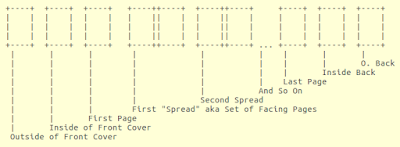Pen 15 Club: I DO like talking about my Flair
OR
riding writing the underground (swimming in sweat te-xt)
(Jennifer Aniston wants no part of this blog post.)
Not sure how this has happened, but here at Reviewiera, we seem to have embarked upon what some sane observers have dubbed "The Pen Cycle"—whilst yet leaving some reliable options uninterrogated. About one of these the hue and cry is easily quelled: The Pentel 205 has been used (and mentioned) but not analyzed because It Is Not in Fact a Pen. It is, however, a persistent delight. Get one.
A more pressing1 issue is that of the venerable Paper♥Mate® Flair. Its thus-far omission glares. I regret my failure; I resent it.
(A Paper♥Mate®Mate Flair pen resting comfortably, after use.)
There isn't a time I was aware but not aware of these pens. They were my dad's leisure-time go-to, first to be called come doodle time or in the face of writing his kid a letter. (Lot of overlap there, actually. His correspondence was usually pretty illustrated, if not illustrative, illuminated if not illuminating.) Later, the illustrious life model Blaster Al Ackerman5 made a positive genre out of his Flair-based portraiture. These pens are cemented into my understanding: an you should say "felt-tip pen" to me, these are what I will think of, 100% of the time4.
(One of Blaster Al Ackerman's "Are You Drunk" portraits, this one of "Some Old Goat".)
Perhaps intimidated by my progenitors6, I rarely used these. Maybe a red one for editing, here and there, but little else. Little else, that is, other than those times I want / need to write on graph paper.
One of our main discoveries seems thus far to have been that, penwise, paper and purpose matter. Daily notebook? I want to write small, so I need a fine, fine tip, and an ink that will last. To-do lists? Probably gonna ride around in pocket or rattle around in my bag, so I need dark lines that don't smudge, and something thick would do the trick. And when I see graph paper, what I want is a big, but tapered, shaft, a lightweight, easy-to-waggle body, and the flatly fun line left behind by the sizeable peak of the Flair. So when I seek to roll up a character, or make a list, or ... well, I don't use graph paper that that much anymore, but when I do, best believe, best beloved, what I want in my hand is one of those old Flair pens.
1 In that it is more deserving of press2
2 And also in that one could well be pressed against a permeable surface, thereby to activate capillary action3 extracting ink from reservoir onto and indeed into the permeable material—I shouldn't've said "surface", that was just wrong, as one of my chief plagues is over-coated glossy postcards on which basically no ink can be found that willn't smudge
3 Maybe? No idea, honestly
4 What I will then think of is this thing I read in Exquisite Corpse somewhere in the early/middle '90s, an extremely college-boy-humor riff using the tools of literary analysis to break down a piece of bathroom-wall graffiti, at one point noting "As this was written in marker, we can safely conclude of the author that he has, in fact, felt the tip"
...
Look, I'm not asking you to love the way my brain works. I certainly don't
5 More Ackerman here. His description of these, from The Blaster Al Omnibus: "I remember feeling seriously lightheaded as I sat at the table and did little Flair-pen drawings"
6 Also intimidated by this current user, because the second season of Love, which she wrote, was one of my favorite low-key watches of 2018




























